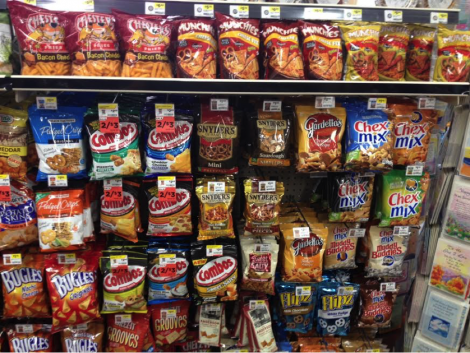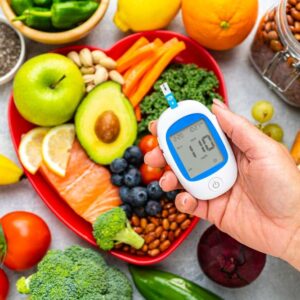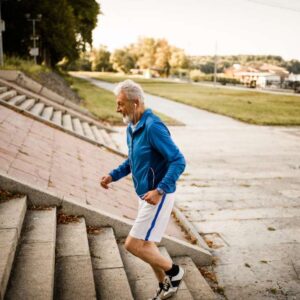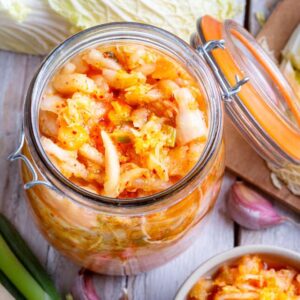
What -- If Anything -- to Eat at the Gas Station
My wife, Laurie, and I have been going all Jack Kerouac lately.
(Laurie informs me that this lead sentence won’t work, as no one knows who Jack Kerouac is anymore. If that’s true, it’s inexpressibly sad. Kerouac wrote On the Road, the definitive “Beat Generation” paean to American restlessness. If you already knew that, forgive me. If you didn’t, read the book.)
We’ve been rampaging around the west in our little SUV. We camp, visit family and generally pressure-wash the cobwebs from our mental attics.
Open, endless western spaces and long, straight highways are terrific antidotes to modern sensory overload.
And what little stimulation one finds on the road is worth absorbing.
Billboards out here urge us to embrace Jesus and avoid meth. Both excellent ideas.
The people are extraordinarily friendly. The land is so much bigger than we are, it seems to arouse our latent tribal instincts — people naturally tend to be kind. They offer directions patiently.
It’s all fun, exciting, even exhilarating, right up until… we get hungry.
Restaurants are surprisingly scarce in much of the arid western U.S. Even supermarkets are few and far between.
So too often, we must face the most difficult reality of life on the American road: gas station convenience store food.
Consider these offerings I photographed in rural… ah… I’m not really sure… let’s call it Nevadakotarizonia:

I’ve road-tripped in Europe and Asia, and as much as I love this country, I have to say it — no nation I’ve visited features anything as repellent as the clown-colored collage of corn-based culinary crap that confronts the typical American road warrior.
In Japan, for example, the roadside combination stores — known as konbini — offer lovely little triangular seaweed-wrapped “sandwiches” known as onigiri, stuffed with rice and tasty, nutrient-dense eel.
In Great Britain, a pub offering a shepherd’s pie or “ploughman’s lunch” seems to pop up every 2 or 3 kilometers.
Only here, I’m afraid, are the offerings so uniformly awful.
Deconstructing the “food” in these photos, a good 90 percent of it combines:
- A grain — typically GMO corn, but sometimes wheat
- “Vegetable oil,” which is almost certainly soybean oil
- High fructose corn syrup.
It is no accident.
These three commodity foodstuffs are cheap to grow, ship, process, and store. They can remain on store shelves for months, years… perhaps decades.
They are, in short, perfect foods from a commercial standpoint.
So the fact that they are inflammation-inducing concentrations of hyperprocessed carbohydrate coated in oxidized seed oil with a glaze of fractionated sweetener… well, we have to live with it.
Assuming we can, in fact, stay alive. Consider a cheery study (1) called “Obesity Prevalence and the Local Food Environment”:
“This study measured the association between the presence of food establishments and obesity among 1,295 adults living in the southern region of the United States. The prevalence of obesity was lower in areas that had supermarkets and higher in area with small grocery stores…”
Exactly. Small grocery stores — like the ones on the nation’s highways appended to gas stations — yield large Americans.
So… if you are on the road… what should you eat?
In my experience, the two best convenience store food choices are some form of trail mix — preferably, a candy-free version — or a relatively low-sugar beef jerky.
But I would also offer a more radical possibility.
I am a great fan of intermittent fasting — the practice of skipping an occasional meal, or even two, and allowing yourself to feel significantly hungry once a week or so.
This practice speeds up the internal cellular housecleaning process known as autophagy — literally “self-eating” — and generally makes human beings healthier in every way. Caloric restriction is the only lifestyle practice that has been definitively shown to extend life span in animals, in some cases up to 30 percent.
So should you starve while on the road?
Of course not. Or at least, not all the time. But grasping the occasional opportunity presented by travel through a “food desert” to eat less is a terrific idea.
Still, as you zoom past the convenience stores and grow ever hungrier, you must eat eventually.
Where?
Laurie and I employ our GPS to locate either an interesting local restaurant or… one of the only two nationwide fast-food chains that, in my view, offer acceptable food on the road in America: Starbucks and Chipotle.
At the former, I tend to get the “protein box.” At the latter, I go for a grain-free “bowl” with plenty of barbacoa beef, picante sauce, and guacamole.
Either works.
Bottom line…
Don’t let a relative dearth of healthful offerings dissuade you from hitting the open American road. Take it from a nutrition writer — there’s more to life than spending every waking moment optimizing your macronutrient ratios. You must feed your soul as well as your belly.
Get out there, enjoy the scenery and the citizenry, do the best you can to eat healthfully, and send your best road-food tips to me at healthfeedback@lfb.org.
And please, if you haven’t, read your Kerouac.
Regards,

Brad Lemley
Editor, Natural Health Solutions
Citations:
1. Morland, Kimberly B., Evenson, Kelly R. Obesity prevalence and the local food environment. Health & Place. Sept. 6, 2009.
Written By Brad Lemley
Brad Lemley is a science and health writer and former senior correspondent for The Washington Post and Discover magazine. He is a tireless advocate for safe, natural, self-directed healthy living practices and therapies.
View More Free Articles
Stop Obsessing Over Diet Trends
Can we stop with the endless diet debates already? Every other week there’s a new headline shouting about which diet is best for weight loss, heart health, or diabetes. Paleo, keto, low-carb, high-protein… it’s exhausting. And now, a new meta-analysis is out comparing the Mediterranean diet, the DASH diet, and something called AHEI (that’s “Alternative...
A New Reason to Ditch Processed Junk
If you’ve ever walked the inside aisles of your local grocery store and thought, “This is all just junk,” your instincts were spot on. A new study published in the journal Thorax just added another red flag to the list of dangers linked to ultra-processed food—a 41 percent higher risk of lung cancer. That’s right....
When Being Winded on Stairs Is Serious (And When It Isn’t)
I had an athlete visit me recently because he experienced shortness of breath while climbing stairs. He is in great shape, so he was worried about what it might mean. “Doc,” he said, “I run five miles three times a week. Why am I huffing and puffing after two flights of stairs?” His concern is...
Study EXPOSES Hidden Danger Lurking in Your Car
We think of our homes and cars as safe havens. But according to a startling new study, they may be flooding your lungs with microscopic plastic particles—every single day. Researchers in France recently found that adults inhale an average of 68,000 microplastic particles daily from indoor air alone. To put that in perspective, that’s about...
Mailbag: Is Modern Food Making You Snore?
“What can cause snoring, and is there a way to correct this issue?” —Seeking Silence Hi Seeking, Snoring happens when the soft tissues in your throat relax and vibrate as air passes through during sleep. While several factors can cause snoring—from sleep position to nasal congestion—I want to share one trigger that might surprise you....
Simple Food Swap SLASHES Dementia Risk 28%
Let’s be honest… who would jump at the chance to cut their dementia risk by 28 percent. And no, you don’t need to run marathons, survive on broccoli, or learn to play the zither (whatever that is) to make it happen. All it takes is one easy swap—something that’s probably already in your refrigerator. Researchers...
This SMART Floss Exposes Hidden Health Danger
Scientists have created dental floss that doesn’t just clean between your teeth—it also tracks your stress while you’re flossing. Now, I know what you’re thinking… “Great—now even flossing is going to stress me out by telling me how stressed I am.” But this fascinating new tool from Tufts University could be a game-changer for understanding...
Is This "Safe" Sweetener Damaging Your Brain?
The headlines are alarming… “Popular Sugar Substitute Linked to Brain Cell Damage” and “Erythritol Could Damage Critical Brain Barrier” are just two of the dozens I’ve spotted recently. But before you toss every sugar-free product in your pantry, let’s take a closer look at what this study actually shows—and what it doesn’t. The latest research...
This Summer Threat Could SPIKE Your Blood Sugar
Picture this… It’s another scorching hot summer day. You crank up the air conditioning while watching the weather forecast, which predicts yet another “record-breaking” heat wave. It’s starting to feel like just another miserably uncomfortable summer. But what you might not realize is that—if you have diabetes—those rising temps could do far more damage to...
Move Over Yogurt—5 Foods That Pack MORE Probiotics
Let’s talk about your gut. The microbiome is the collection of trillions of bacteria and other tiny organisms that live in and on your body—especially in your gut—and help keep you healthy. I’ve written often about how vital it is to maintain a healthy microbiome. And you might have dutifully added yogurt to your shopping...









